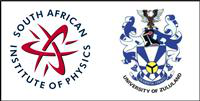Speaker
Apply to be<br> considered for a student <br> award (Yes / No)?
Yes
Abstract content <br> (Max 300 words)
Guillemot et al. (2013) recently reported the discovery of gamma-ray pulsations from the 22.7 ms pulsar (pulsar A) in the famous double pulsar system J0737-3039A/B. The gamma-ray light curve of pulsar A has two peaks separated by approximately half a rotation, and these are non-coincident with the observed radio and X-ray peaks. This suggests that the gamma-ray emission originates in a part of the magnetosphere distinct from where the radio and X-ray radiation is generated. Thus far, three different methods have been applied to constrain the viewing geometry of pulsar A (its inclination and observer angles): geometric modelling of the radio and gamma-ray light curves, modelling of the position angle sweep in phase seen in the radio polarization data, and independent studies of the time evolution of the radio pulse profile of pulsar A which constrain the viewing angle. These three complementary methods have yielded consistent results: pulsar A's rotation axis is likely perpendicular to the orbital plane of the binary system, and its magnetic axis close to lying in the orbital plane (making this pulsar an orthogonal rotator). The observer is furthermore observing emission close to the magnetic axis. Thus far, however, current models could not reproduce all the characteristics of the radio and gamma-ray light curves, specifically the large radio-to-gamma phase lag. In this talk we discuss some preliminary modelling attempts to address this problem, and offer ideas of how the light curve fits may be improved by adapting the standard geometric models in order to reproduce the profile positions more accurately.
Would you like to <br> submit a short paper <br> for the Conference <br> Proceedings (Yes / No)?
Yes
Level for award<br> (Hons, MSc, <br> PhD)?
MSc
Main supervisor (name and email)<br>and his / her institution
Dr. C. Venter
christo.venter7@gmail.com
Centre for Space Research, North-West University, Potchefstroom Campus

